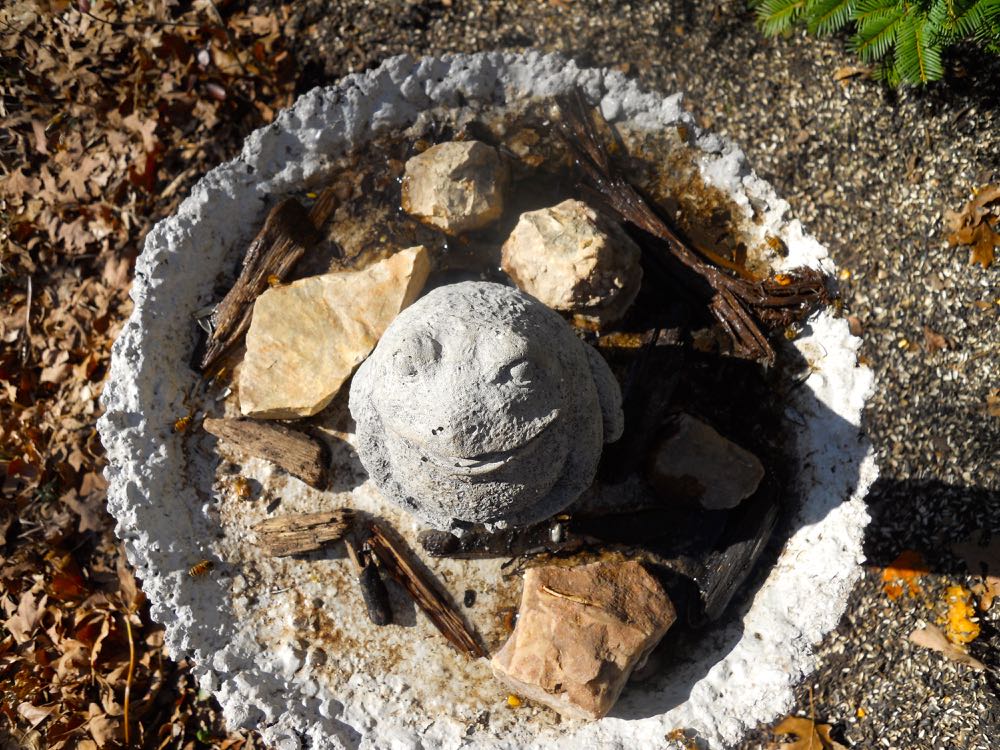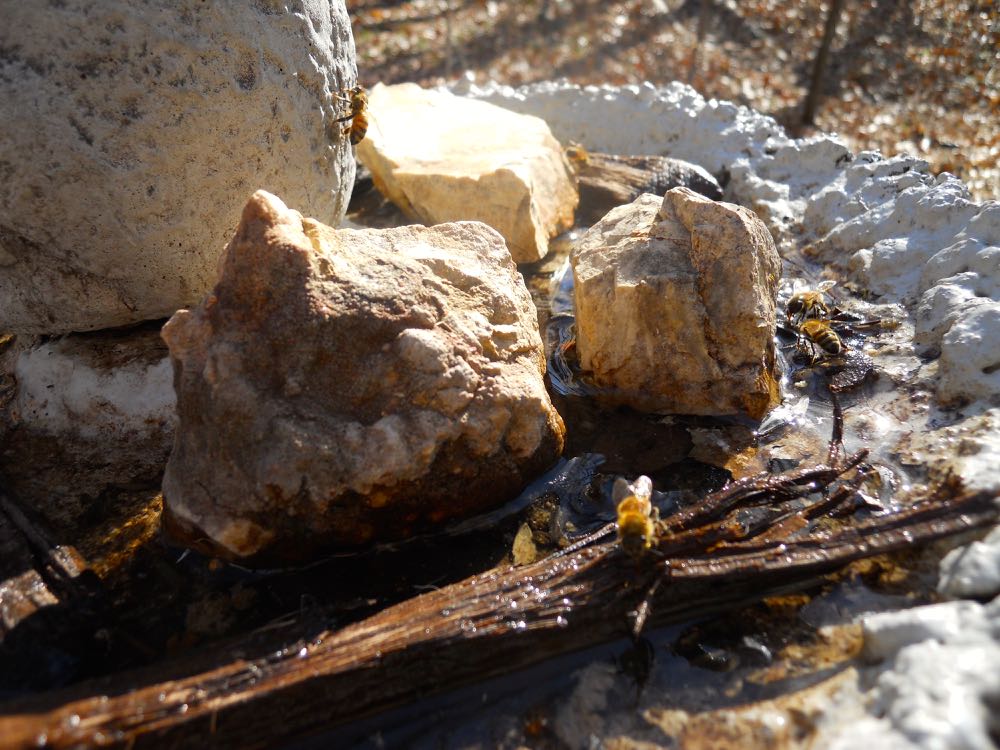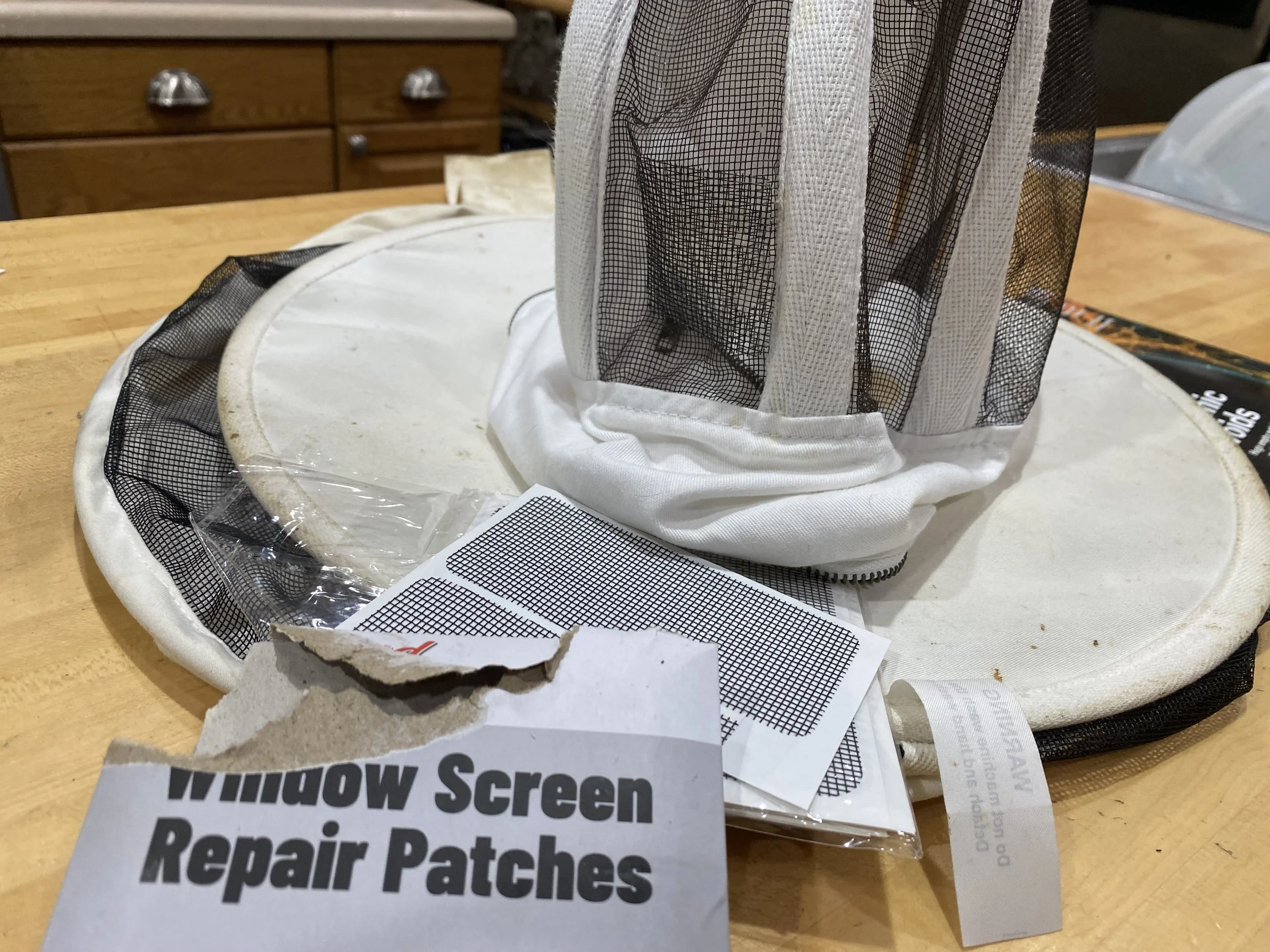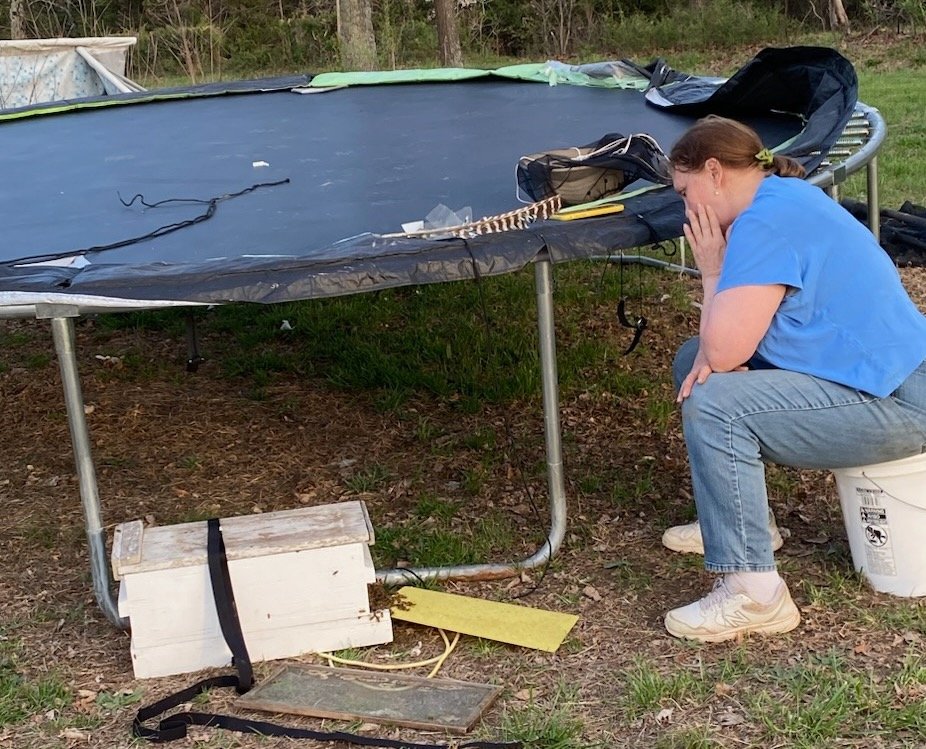Repurposed Old Bird Bath
/This old bird bath has been repurposed into a bee bar in the front of my Missouri garden.
Repurposed Bird Bath Bee Bar
There are a number of ways beekeepers can provide honey bees a water source. Honey bees need a continuous water source within half mile of their home hive for a variety of reasons: to mix with food, to keep hive cool, to hydrate themselves. Just like any other creature, they need a continuous source of water.
In Missouri, the most popular recommendation is to have a pond. If not, honey bees will go looking for water, usually in the wrong places like a dog water bowl, leaking hose connection or, heaven forbid, a neighbor's nearby swimming pool. But what if you don't have a pond close by, how can you provide honey bees water?
Bird Baths Good Honey Bee Watering Spots
I use a variety of bird baths, from new ones I pick up at yard sales to this veritable antique one I have had for several decades and was almost discarded. Actually the old concrete bird bath in this example was sitting in a heap pile because the top had started to break. My handyman had hauled it off because I couldn't seem to get the top repaired and had given up working on it so he assumed I was done with it. I loved the base with the wildlife animals in the design but the top was challenging me and taking up space I needed in the garage.
Shortly thereafter, we had rain and I spotted honey bees gathered on the side as soon as the sun was out. Hopeful that I could still have this in my garden, I hauled it back to the garage to repurpose it into what I call a "bee bar." And I put a sign on it that said "do not touch" that was not intended for the bees.
Birds like to have a little depth to their bird bath so they can immerse themselves in the water and move their wings. This one had become too shallow for most birds but as I soon discovered was a good depth for giving honey bees water.
My repurposed old bird bath from the birds eye view looking down on the concrete frog.
When I first started working on this bird bath, the edges were so worn they were literally chipping off in chunks. I had added some ready mix concrete to mend the holes hoping they weren't big enough to fall off. I was wrong. One morning I found the entire original concrete rim on the ground, leaving the repaired concrete providing a more jagged edge. Perfect safe bee landings spots!
After painting it a grey color with latex paint, then giving it a second coat, the top of the bird bath looked brand new and ready for business. The fat frog was a gift from a friend and now nicely sits in the flat center of the old repurposed bird bath.
Side view of the re-purposed bird bath into a bee bar to give my honeybees a water source.
To give my honey bees safe landing spots, I added rocks and sticks so they can safely land and take up the water. Without safe landing spots, I have noticed honey bees will see their reflection in water and land in that spot, usually drowning when their delicate wings become water-logged. When I have fished them out of the water, nearby rocks and the concrete frog provide a nice drying off spot.
Tried and Tested Idea
This re-purposed bird bath has now been in use as a "bee bar" for more than a year and is working quite nicely. In addition to honey bees, I often find other pollinators including butterflies, wasps, ants and the odd bird just stopping by for a drink.
On very hot days I have to refill it because it doesn't hold as much water as other bird baths but I like the idea that it's now repurposed instead of taking up space in a landfill.
Some of my honeybees taking a drink safely from old sticks in the repurposed bird bath.
I don't worry about keeping the water clean, my honey bees seem to prefer older water with a "bouquet" to it. If leaves fall in, I leave them, it gives bees a safe place to hide in the event of a quick thunderstorm.
How do you provide your honey bees with water?
Charlotte















